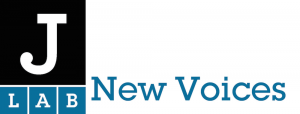By the end of its first year, the Madison Commons Project had launched a community website, trained 50 citizen journalists, established several partnerships with community organizations and the media but, its founder says, it needs more funding and content to be a viable model.
The project launched with $12,000 from J-Lab and $10,000 in university funding but recent funding overtures to two community foundations were unsuccessful.
“Sustainability of our model depends on local community foundations seeing the civic utility of the commons and making modest sustaining contributions that can serve as a base for others,” said Lew Friedland, project director and journalism professor at the University of Wisconsin-Madison.
For the 2006-2007 academic year, the university’s School of Journalism and Mass Communication will match J-Lab’s contribution of $5,000. The Commons plans to try again to seek grants from the Madison Community and Evjue Foundations. In the fall Madison Commons will explore online advertising and small donations as revenue sources.
To remain a viable project, Madison Commons must also motivate more content contributions. Currently, it is dependent on high commitments from a small number of volunteers: 80 percent of the content is provided by 20 percent of its trained reporters. To create more opportunities for citizen to participate, the Commons is:
- Looking for new forms of content (especially in blog formats) from citizens.
- Allowing neighborhood newsletter writers to post directly to the site with authorization.
- Adding a blog-like feature called “My Madison.”
- Running photo workshops.
Community trainees felt initial training was insufficient for them to write for the site so the Madison Commons community journalism training curriculum was reworked for the spring to include four face-to-face teaching sessions instead of three and four online assignments, resulting in eight weeks of training. One-on-one help was provided and 50 community members and 40 journalism students ended up going through the training program.
The ongoing demand for training sessions is a good sign for sustainability, Friedland said. Beyond the original citizen journalist training, shorter, one- to two-hour workshops were held in spring and have continued into summer.
“Our online curriculum has been used by other CJ (citizen journalism) efforts. While we feel it was a fairly good start, there is a lot of room for refinement, expansion, and improvement,” Friedland said.
This fall the Commons plans to conduct a major training initiative for Madison neighborhood newsletter writers to help them write for the Commons site.
Summer has proved to be a slow period for the project because student contributors are away. Friedland said that citizen efforts, content from the two local dailies and about five students volunteers have contributed to a reasonable flow of new content.
There is growing citizen interest in the site, also a good sign for sustainability, said Friedland. The project’s website attracted 100 unique visitors after its launch in March, but traffic has increased steadily and in June the site receives 343 unique visitors totaling 518 page views.
“We are receiving direct expressions of interest, including requests for profiles from local groups and requests to link to various civic organizations. We think we have established a foothold that will continue to grow,” Friedland said.
The Commons site now has 34 neighborhood pages and covers 19 topics areas.
Community and media partnerships have continued to grow. The first partners, the East Isthmus Neighborhood Planning Council and the South Metro Planning Council are situated in the more working-class and minority regions of Madison, and were chosen to expand voices beyond the university community.
Two more partners were added in February and March: the city’s Department of Neighborhoods of the City of Madison and the Northside Planning Council.
The Commons has built relationships with the two daily newspapers (Wisconsin State Journal and Capital Times), and also established a partnership with the weekly Isthmus and Channel 3000, the web operation of the WISC-TV, the CBS affiliate.
Madison Commons is also developing links to alternative media, including WYOU, the cable access channel, and WORT, an independent local radio station.
Friedland said he hopes the project will suggest a new model for a community commons to address such concerns as: Who will sustain local coverage when the major news organizations no longer practice civic journalism?
The commons model seeks to shift the responsibility for hyper local coverage to civil society and institutions (in this case a university program, the planning councils and the city itself) working with market-based media institutions.
“While we would by no means claim success in demonstrating that this is a sustainable model – that remains to be seen – it certainly has proven to be a workable model in its first year,” Friedland said.



